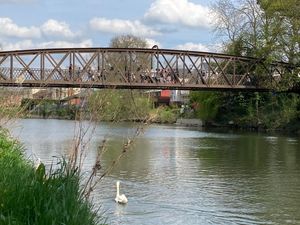Meet the Shrewsbury doctor who's climbed Everest twice
Two hundred metres, 218 yards, or 654ft. Whichever way you look at it, it isn’t very far at all.
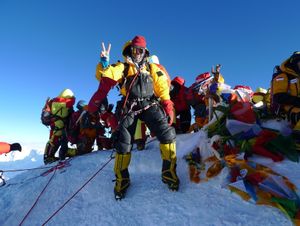
Unless you are Shrewsbury doctor Adam Booth. To him it seems vast, because that is the distance he came within of being only the third person in the world to have completed the hat-trick of climbing Mount Everest and the neighbouring mountains of Lhotse and Nuptse in successive days.
“I got within 200 metres of the top of Nuptse,” says Adam, a 36-year-old GP based at Prescott Surgery.
“The conditions were very difficult at that point. Some people might have ploughed on, but you can get killed doing that, and my experience as a climber told me to stop.”
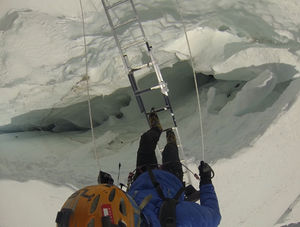
But even though he did not quite manage the hat-trick, his feat of climbing Everest and Lhotse, which is the fourth highest mountain in the world, in consecutive days, still puts the former Shrewsbury School pupil in a pretty exclusive club.
“I don’t know the exact number, but less than 50 people in the whole of the world have climbed both in two,” he says.
“Many people are dead on their feet after climbing Everest, but I was fortunate in that I was feeling pretty good, and I was ready to do the next one.”
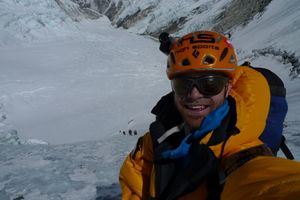
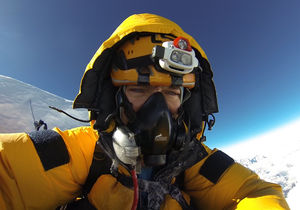
It is not the first time the married father-of-two has climbed Everest, he previously scaled the world’s highest mountain in 2013 when he was invited to join a friend’s party as the expedition doctor.
His latest expedition, which took place last month, came almost exactly 65 years since Sir Edmund Hillary and Tenzing Norgay became the first people in history to climb Everest.
But while Hillary and Tenzing hogged the headlines at the time, what is less known is that it was the deputy leader of that expedition was Sir Charles Evans, also a former pupil of Shrewsbury School, who himself got within 600ft of the peak.
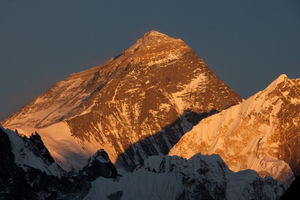
Andrew Irvine, who with fellow mountaineer George Mallory perished during an attempt to scale Everest in 1924, and Adam says the stories of these distinguished alumni were a big influence on him when he was growing up.
“There were some special anniversaries for Mallory and Irvine’s attempt while I was at school, and the school’s mountaineering club was very active at that time,” he says.
“When I was at school, a lot of people took a mild interest in mountaineering, but I was the one who became obsessed. Two of the teachers at the school, Martin Hanson and Mark Twells, were really encouraging.”
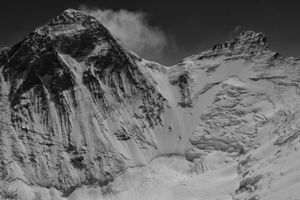
The summit of Everest is 29,029ft above sea level, but it is the last 3,000ft which is where the real difficulties lie, being known as the ‘death zone’ – with good reason.
“There’s so little oxygen, you can’t sustain life there for long,” says Adam.
“As soon as you get to 8,000 metres (26,247ft), it is so hard to breath, every step is extremely difficult.
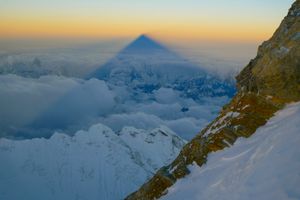
“You could stay up there for perhaps a week, but you wouldn’t be in very good shape at the end of it. Most people who climb Everest go down the same night, they can stay in the death zone for 24-48 hours.”
Sadly, Adam and his fellow climbers had to come to terms with the death of a member of their team, a 63-year-old doctor from Macedonia, during last month’s expedition.
“We don’t know how he died, but we heard he had a heart attack,” he says. It’s terrible, there have been several other deaths on the mountain this year, but that could have happened in the supermarket.”
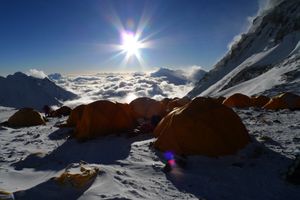
Extreme mountaineering requires extreme training, and to that end Adam has converted his garage into a climbing centre, with a professional-standard climbing wall.
“Now I do a lot of my climbing at Nesscliffe, but it is convenient having somewhere just outside your door,” he says.
“Sometimes I will do endurance training, I will spend several hours a week doing circuits of the wall, you can do figure of eights and all sorts.”
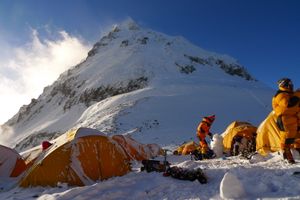
The challenges of climbing Everest are huge, the terrain gruelling, and the conditions take a huge toll on the mind and body.
But Adam says the rewards are equally huge, being able to enjoy a view that only a tiny number of people will ever experience, and which no camera will ever truly capture.
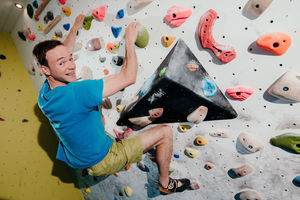
“It’s breathtaking, you can see so far, you can see the curvature of the earth, you can see the dawn starting, when you first get that little band of light,” he says.
“It’s like being an astronaut. You’re so high up, you feel the cold morning air in your face, it’s about -30. You’re body isn’t cold, but you certainly feel it on the face.
"There’s something about that rarefied air, you are at the altitude that the jets fly, it’s just an amazing feeling.”



